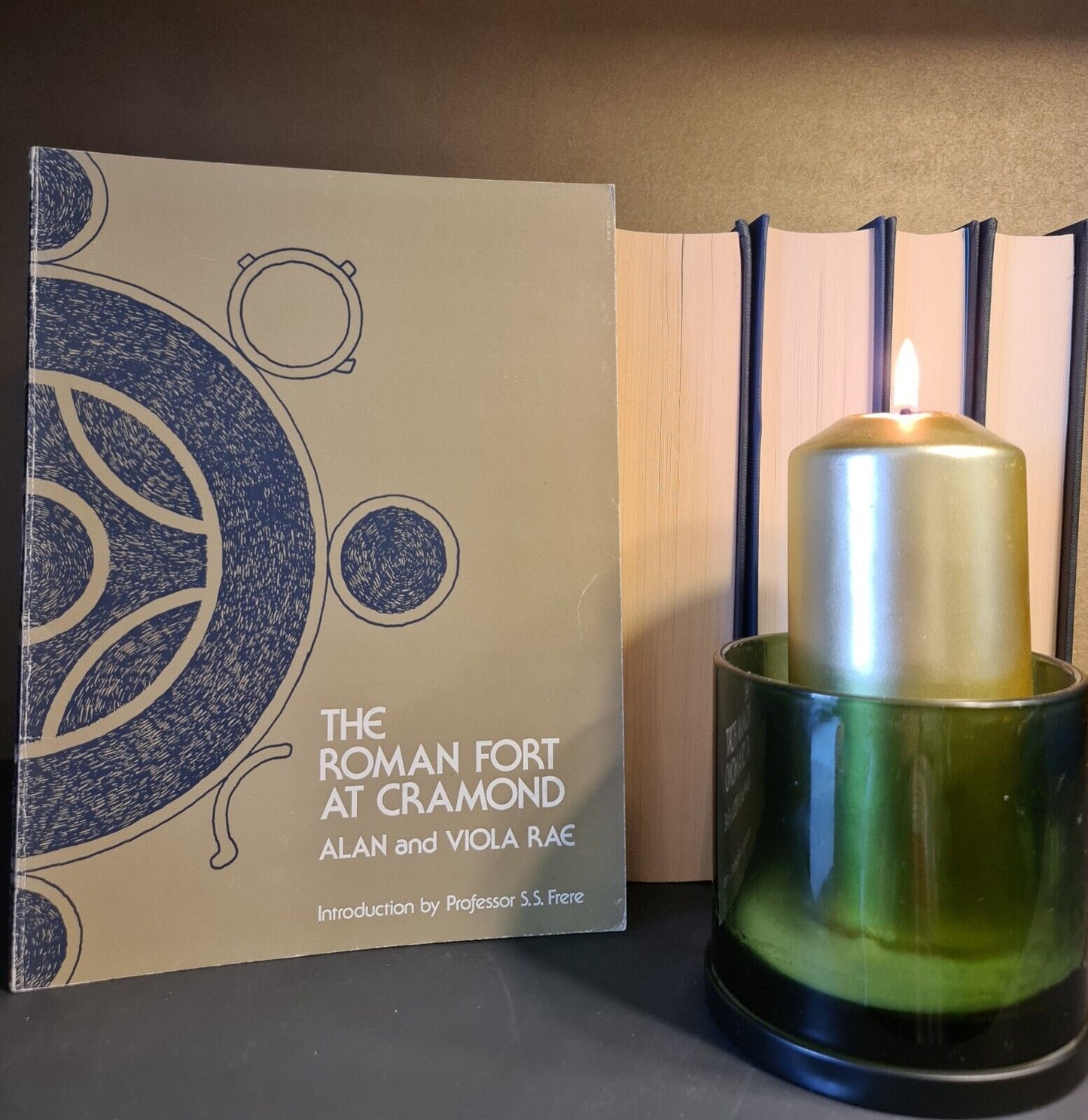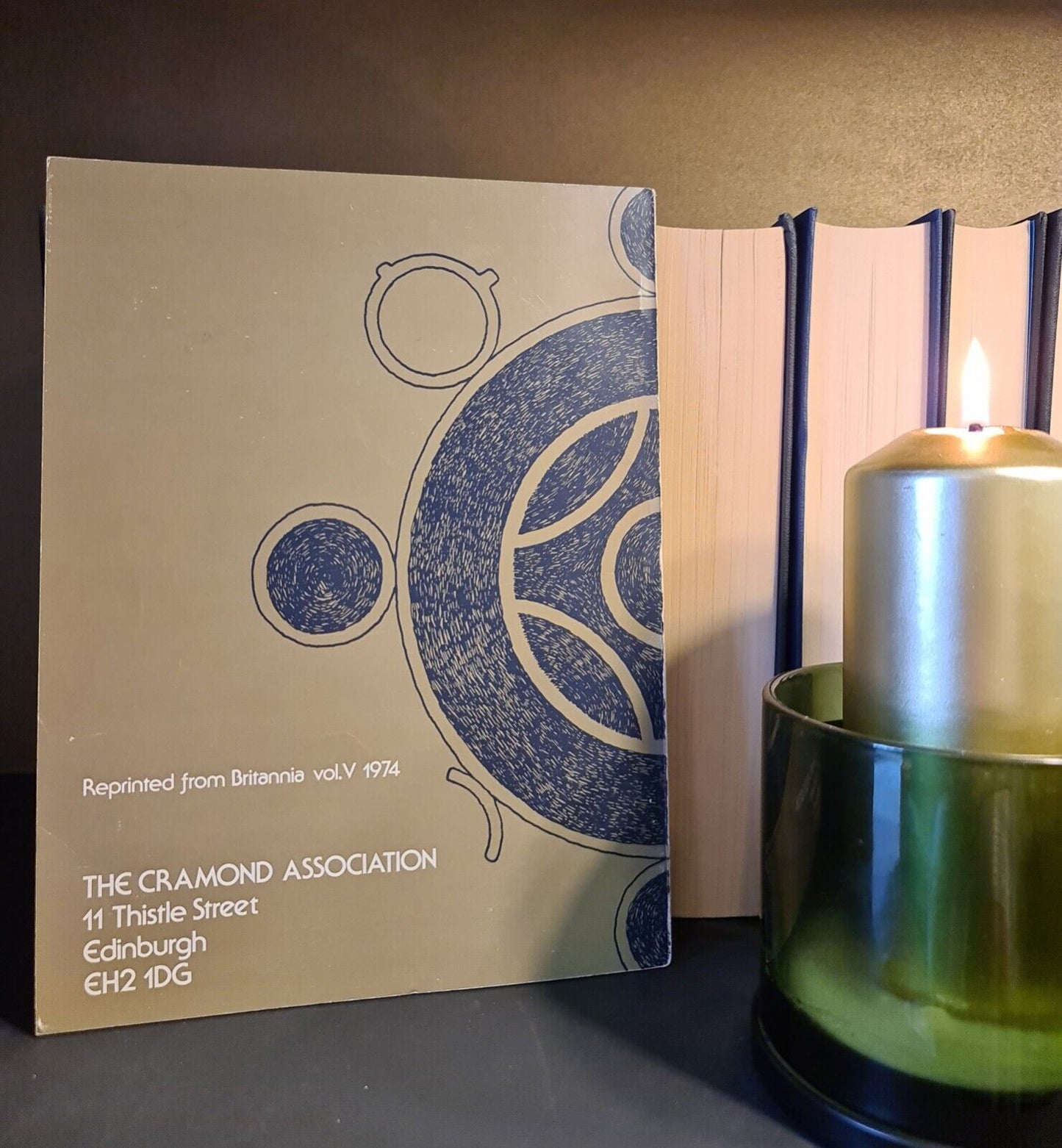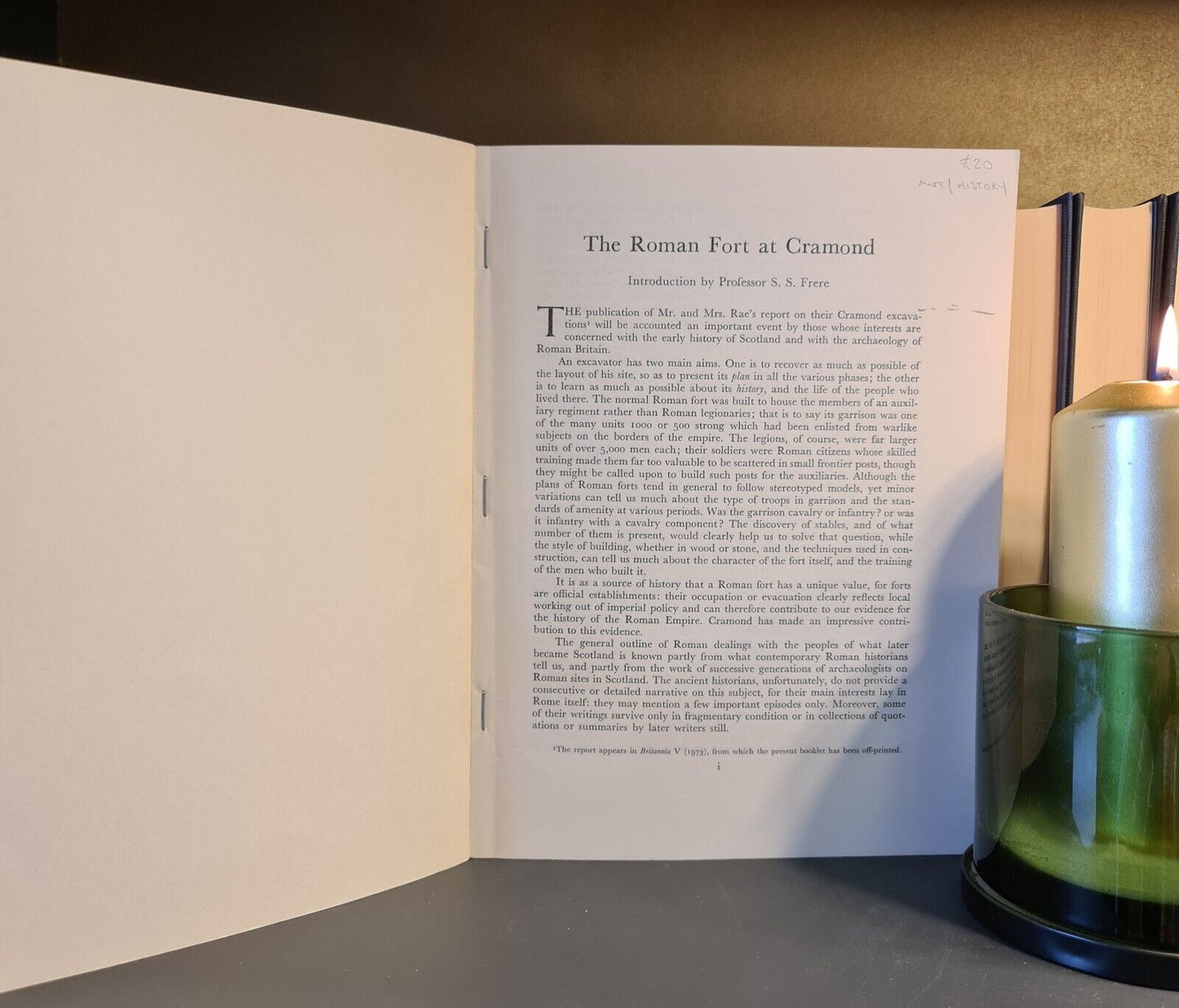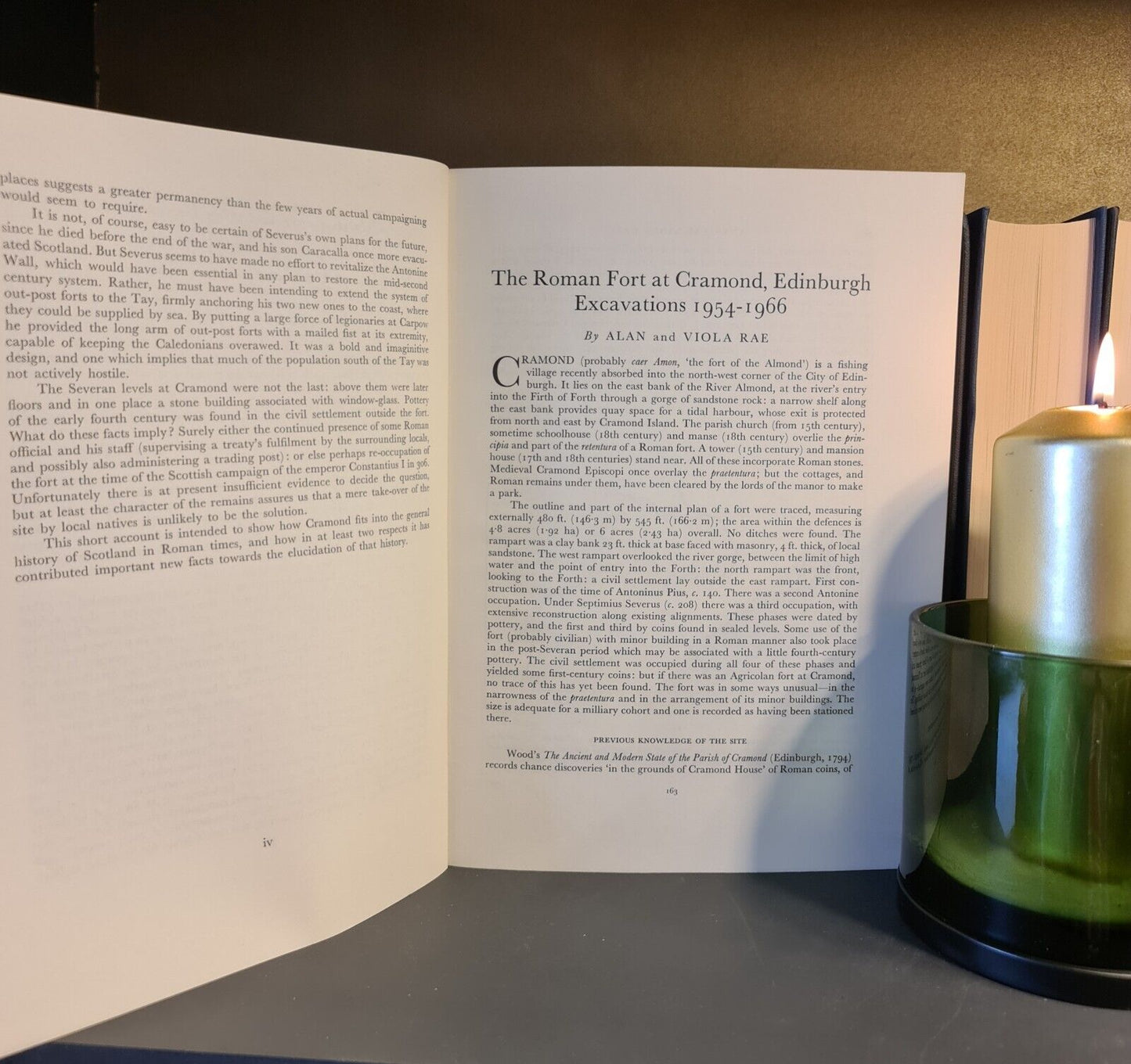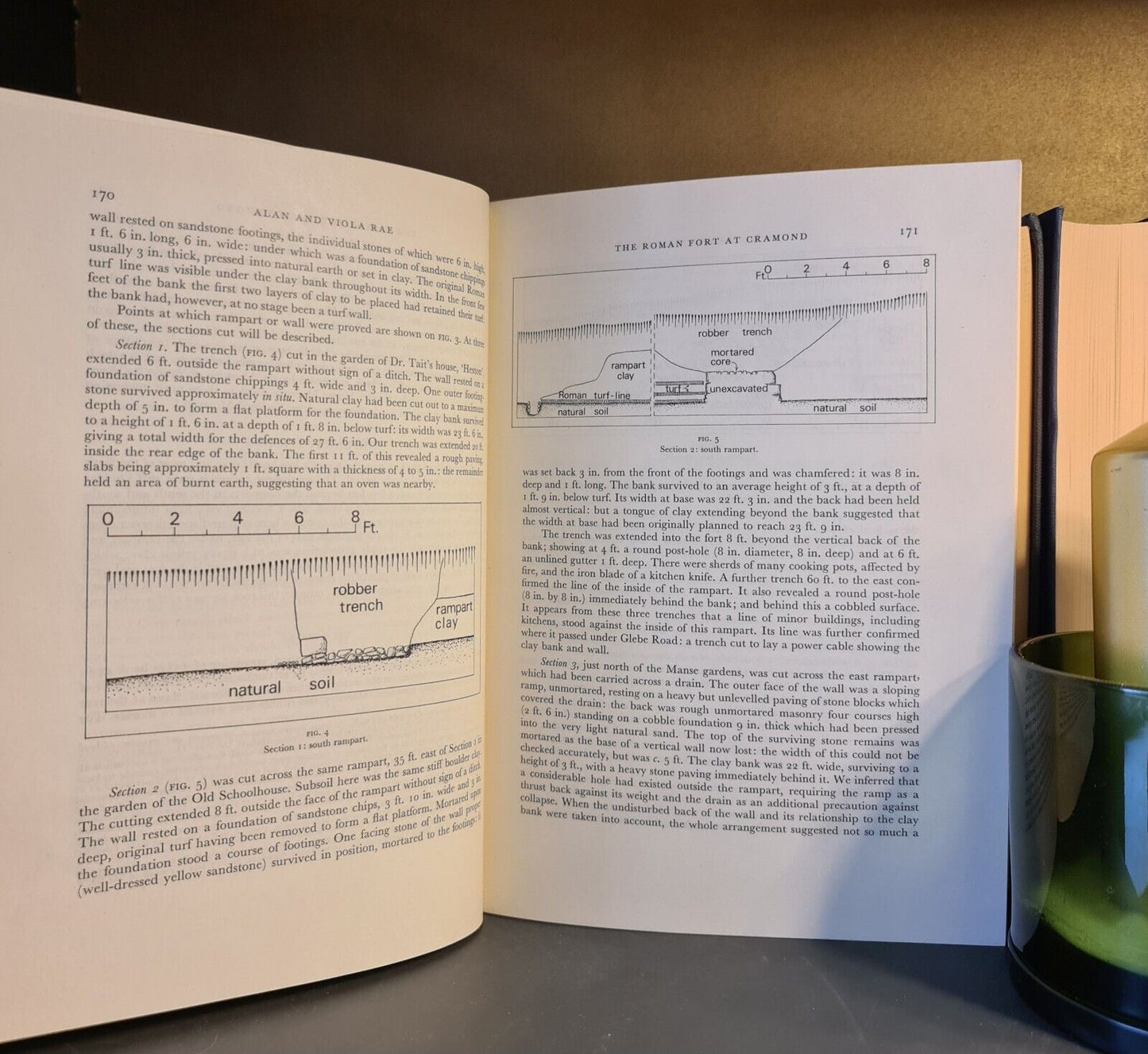1
/
of
6
The Gently Mad Book Shop
The Roman Fort at Cramond, A & V Rae: Archaeology: Roman Empire: Scots History
The Roman Fort at Cramond, A & V Rae: Archaeology: Roman Empire: Scots History
Regular price
£24.00 GBP
Regular price
Sale price
£24.00 GBP
Unit price
/
per
Tax included.
Couldn't load pickup availability
The Roman Fort at Cramond
By Alan & Viola Rae.
Published by The Cramond Association, Edinburgh, 1975. Paperback, 232 pages. Black & white illustration and photography throughout.
CONDITION
Overall good condition - see photos. No names or writing. Images crisp and clear.
THE publication of Mr. and Mrs. Rae's report on their Cramond excavations' will be accounted an important event by those whose interests are concerned with the early history of Scotland and with the archaeology of Roman Britain.
An excavator has two main aims. One is to recover as much as possible of the layout of his site, so as to present its plan in all the various phases; the other is to learn as much as possible about its history, and the life of the people who lived there. The normal Roman fort was built to house the members of an auxiliary regiment rather than Roman legionaries; that is to say its garrison was one of the many units 1000 or 500 strong which had been enlisted from warlike subjects on the borders of the empire. The legions, of course, were far larger units of over 5,000 men each; their soldiers were Roman citizens whose skilled training made them far too valuable to be scattered in small frontier posts, though they might be called upon to build such posts for the auxiliaries. Although the plans of Roman forts tend in general to follow stereotyped models, yet minor variations can tell us much about the type of troops in garrison and the standards of amenity at various periods. Was the garrison cavalry or infantry? Or was it infantry with a cavalry component? The discovery of stables, and of what number of them is present, would clearly help us to solve that question, while the style of building, whether in wood or stone, and the techniques used in construction, can tell us much about the character of the fort itself, and the training of the men who built it.
It is as a source of history that a Roman fort has a unique value, for forts are official establishments: their occupation or evacuation clearly reflects local working out of imperial policy and can therefore contribute to our evidence for the history of the Roman Empire. Cramond has made an impressive contribution to this evidence.
The general outline of Roman dealings with the peoples of what later became Scotland is known partly from what contemporary Roman historians tell us, and partly from the work of successive generations of archaeologists on Roman sites in Scotland. The ancient historians, unfortunately, do not provide a consecutive or detailed narrative on this subject, for their main interests lay in Rome itself: they may mention a few important episodes only.
(Bindery A2)
Share with someone
